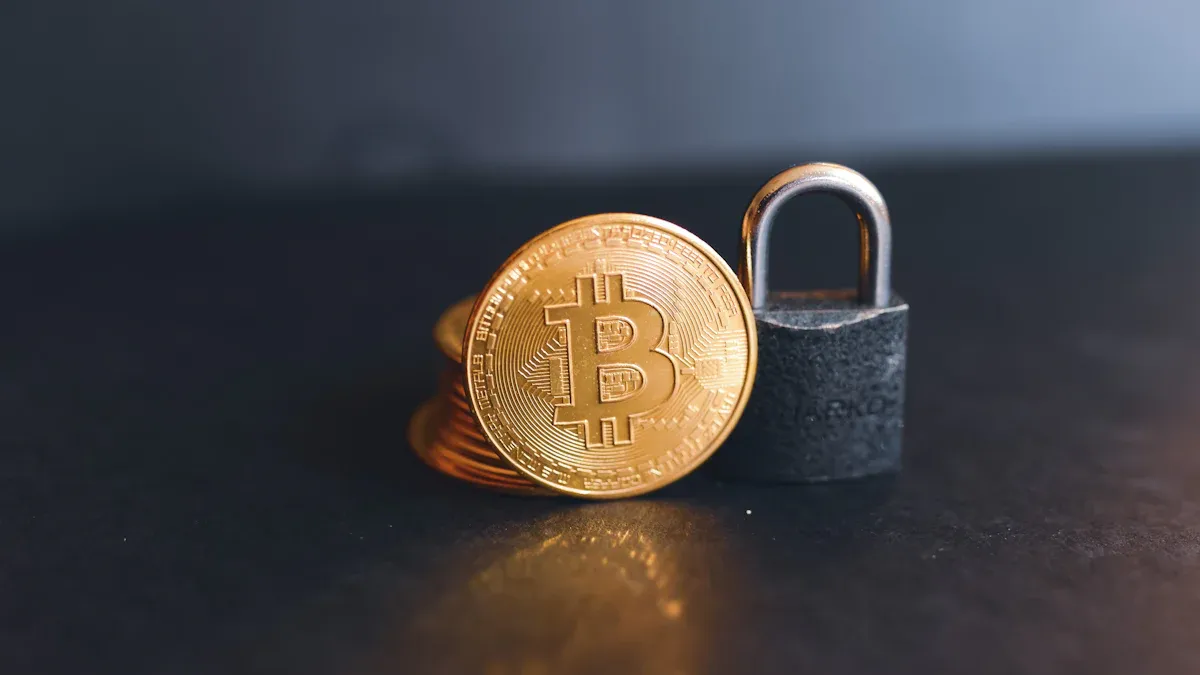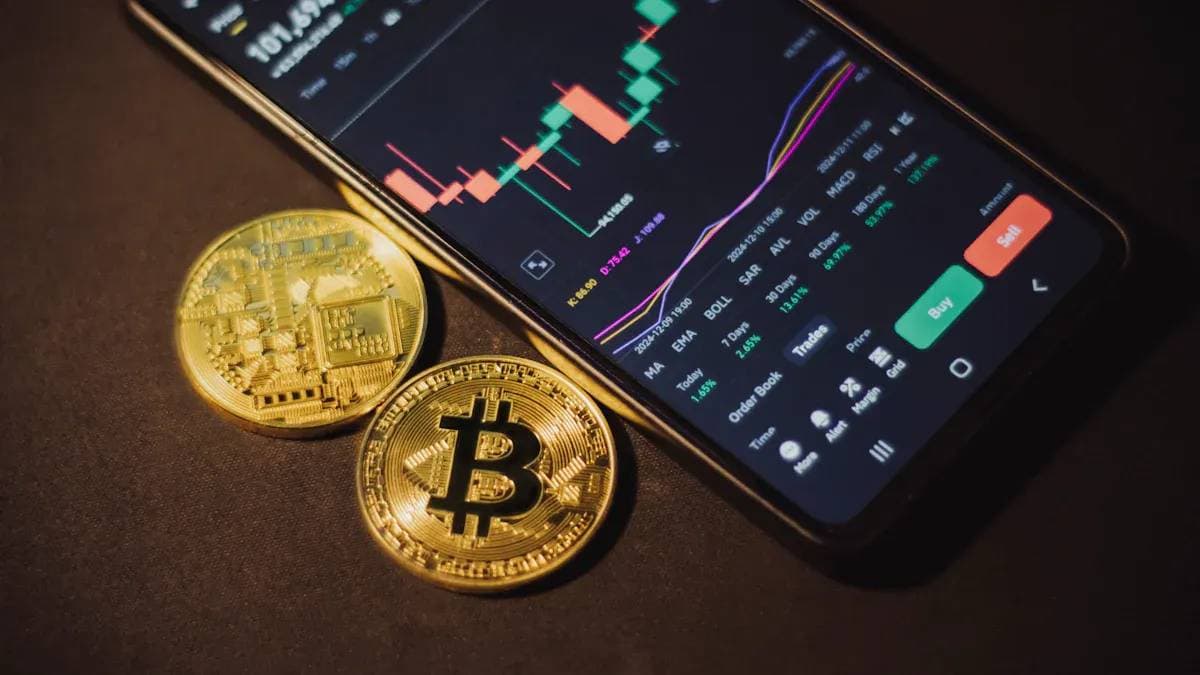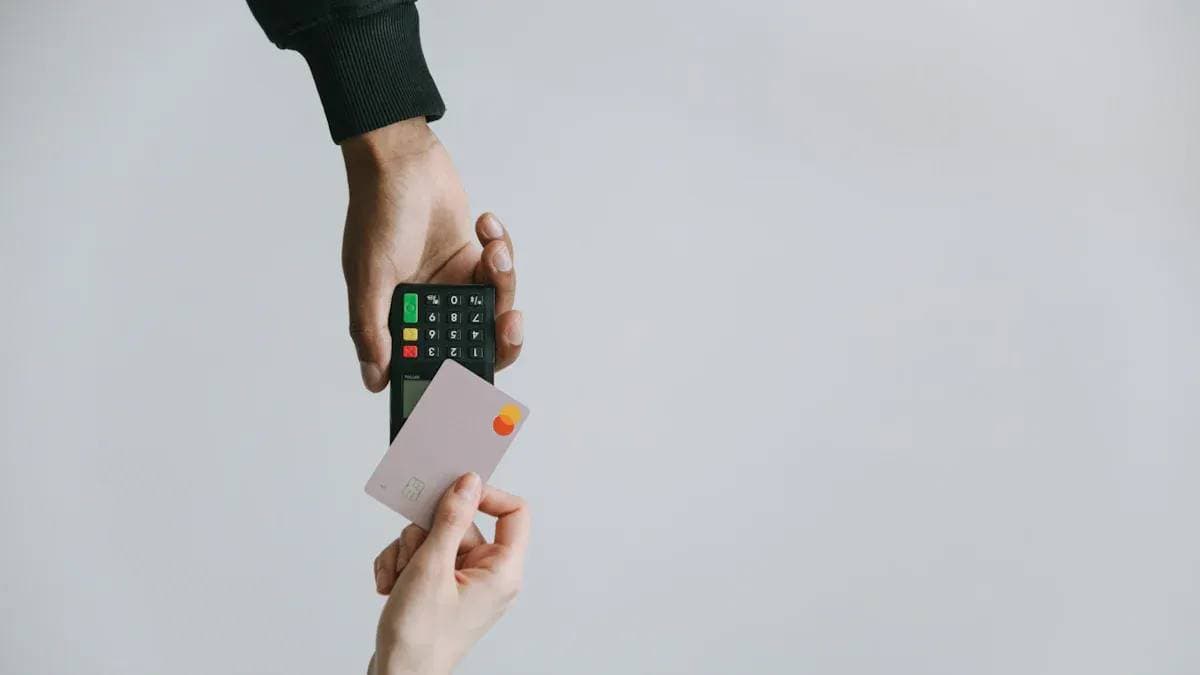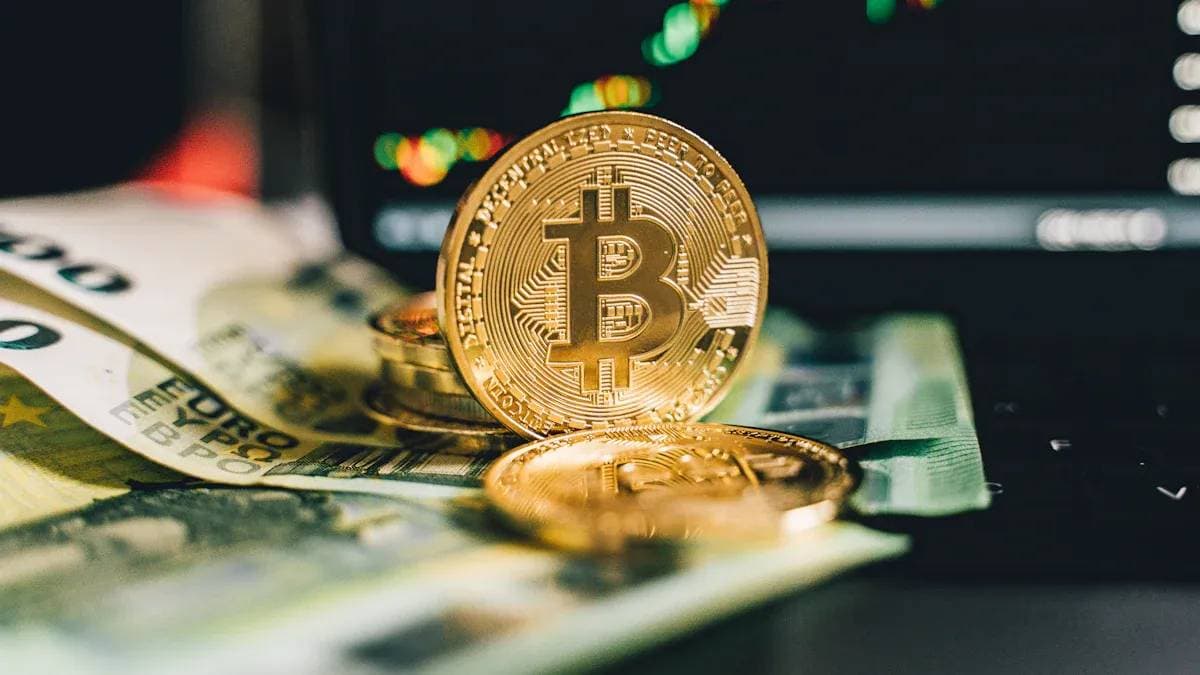- EasyCard
- Trade
- Help
- Announcement
- Academy
- SWIFT Code
- Iban Number
- Referral
- Customer Service
- Blog
- Creator
USDT Collection Anti-Freeze Techniques and Compliant Withdrawal Strategies

Image Source: unsplash
You are using USDT in international trade, enjoying its fast settlement and low handling fees. The rise of stablecoins is unstoppable, with their transaction volume and market adoption confirming this.
- Stablecoin annual transaction volume has exceeded $27.6 trillion, surpassing Visa.
- USDT market cap has grown from about $70 billion at the beginning of 2023 to over $140 billion.
- In Europe, stablecoins account for nearly half of all cryptocurrency transaction volumes.
However, behind this efficiency lies a core risk: receiving “black USDT” leading to fund freezes. Therefore, learning how to safely use stablecoins is your primary task to effectively leverage their advantages and secure your assets.
Core Points
- Before receiving USDT, carefully check the counterparty to avoid receiving “black USDT” from unknown sources.
- Use on-chain tools to check the risk score of USDT addresses, ensuring fund sources are safe.
- Generate an independent collection address for each transaction to disperse and isolate risks.
- Choose Hong Kong licensed exchanges for large USDT withdrawals; this is the most compliant and secure path.
- If your bank card is frozen, immediately contact the bank and prepare all transaction proof materials for appeal.
Safely Using Stablecoins: Collection Anti-Freeze Techniques

Image Source: pexels
The first and most important line of defense for securing funds is “prevention in advance.” Once you receive “black USDT,” subsequent handling becomes very passive and costly. Therefore, you must establish a complete collection risk control process. Learning how to safely use stablecoins is the cornerstone of your long-term business security.
Counterparty Due Diligence: Identifying and Avoiding Black USDT
“Black USDT” does not refer to a specific type of USDT but to USDT with suspicious sources associated with illegal activities. Once these funds flow into your address, it may cause your address to be flagged or even frozen by Tether officially.
What is “black USDT”? Criminals often use USDT’s convenience for illegal activities. They transfer funds via blockchains like Tron, then instruct victims to send cryptocurrency to wallets they control, ultimately converting to fiat in the market to complete the money laundering loop. If your account becomes associated with these addresses, it faces the risk of being “contaminated.”
Conducting due diligence on your counterparty before each transaction is crucial. You can identify high-risk counterparties through the following danger signals:
- Lack of Escrow Mechanism: The transaction relies entirely on verbal promises, requiring you to send large USDT first.
- Invalid Proof of Ownership: The counterparty tries to prove ownership of large assets by sending a small amount, a typical scam tactic.
- Refusal to Provide KYC Information: Legitimate business counterparties are usually willing to provide identity verification. Refusers can almost certainly be deemed high-risk.
- Inequality in Batched Transactions: The counterparty may act honestly in the first small transaction but require you to pay first in subsequent large ones, a common incremental scam.
Ignoring these danger signals has painful consequences. For example, the former CEO of US Heartland Tri-State Bank misappropriated bank assets to invest in a fraudulent cryptocurrency project (involving USDT transactions), causing the bank losses of about $47.1 million. This warns us that even seemingly reliable transactions must be strictly reviewed.
On-Chain Tool Application: Checking Address Risk Scores
Before trading with a new counterparty, be sure to use on-chain analysis tools to check the risk of their USDT address. These tools perform a “health check” on addresses using big data and AI.
Professional analysis tools (like Chainalysis, TRM Labs) or integrated payment platforms (like Biyapay) automatically associate a risk score with addresses. Their working principles mainly include:
- Database Matching: Compare addresses with global sanction lists and blacklists.
- Behavior Analysis: Use AI and machine learning to analyze transaction patterns, identifying abnormal behaviors like money laundering or mixing.
- Risk Scoring: Give an intuitive risk score based on the address’s historical activities, fund sources, and associations.
A high risk score usually means the address is related to the following activities:
| Risk Indicator | Description |
|---|---|
| SANCTIONED | Address associated with sanctioned entities or individuals. |
| SCAM | Address involved in phishing, fraud, etc. |
| DARKWEB BUSINESS | Address linked to illegal dark web market transactions. |
| MIXING / MIXER | Address uses or is a mixing service to obscure fund sources. |
| LAUNDERING | Address identified as involved in money laundering. |
| RANSOMWARE | Address related to ransomware attacks. |
Practical Advice You can use free tools like BitHide AML Bot (first query free, subsequent about $0.8 each) for basic checks. For enterprises needing high-frequency, in-depth analysis, more recommend payment solutions like Biyapay with embedded professional AML detection. It automatically scans counterparty addresses during collection, blocking risks at the source, allowing you to focus on business without switching tools. This is a key step to safely using stablecoins.
Building Collection Architecture: Using Isolated Addresses to Disperse Risks
Never use a single address to receive all payments. This is like putting all eggs in one basket; once the address receives black USDT and is contaminated or frozen, all your funds face risk. The correct approach is to build a multi-layered collection architecture to isolate and disperse risks.
The most effective method is to generate a unique, one-time collection address for each order or customer.
Automated Collection Address Generation Process:
- Generate Unique Address: When a customer creates an order, your system should automatically generate a brand-new USDT collection address for them.
- Monitor and Verify: The system monitors the address in real-time via API. Once the correct USDT amount is received, the order status automatically updates to “paid.”
- Fund Aggregation (Optional): Periodically aggregate funds from these dispersed addresses safely to your main cold wallet.
This “one order, one address” model precisely isolates risks to single transactions. Even if one address unfortunately receives problematic funds, it only affects that order’s payment, not impacting your main fund pool.
Solution Recommendation Manually managing hundreds or thousands of addresses is unrealistic. You need an automated payment system. Payment gateways like Biyapay provide mature APIs and plugins that easily integrate into your e-commerce site or platform. They automatically create and manage unique collection addresses and monitor transaction status in real-time, greatly simplifying the process of safely using stablecoins.
For enterprises holding large funds, consider more advanced security solutions like smart contract-based multi-signature wallets (Multi-sig).
| Feature | Description |
|---|---|
| Multi-Sig Solution | Use smart contract wallets like Gnosis Safe, deployed on blockchain. |
| Define Owners and Thresholds | Set multiple hardware wallets as “owners” and require multiple signatures for transactions (e.g., 3 out of 5 owners). |
| Hardware Wallet Diversity | Use different brands (like Ledger and Trezor) to prevent single-manufacturer vulnerabilities. |
| Eliminate Single Points of Failure | Keys held by different people in different locations, greatly enhancing asset security. |
Emergency Handling for Suspicious Funds
Although we emphasize prevention, you still need an emergency plan. If on-chain tool analysis shows a received address has high risk or you receive an exchange risk alert, act immediately.
- Immediate Isolation: Do not touch the suspicious funds. Do not mix them with other funds or use them for payments or withdrawals. Mark them as “under observation” or “isolated.”
- In-Depth Analysis: Use professional on-chain analysis tools (like Chainalysis, TRM Labs) or contact your payment provider (like Biyapay’s risk control team) to trace the funds, determine risk sources and contamination level.
- Contact Counterparty: Under safe conditions, try contacting the payer to clarify fund sources or replace funds.
- Seek Professional Advice: Contact cryptocurrency lawyers or compliance experts to assess potential legal risks.
Treat suspicious funds seriously. According to relevant laws, knowingly or should-knowingly holding or transferring criminal proceeds may lead to asset freezes, confiscation, or even more serious legal actions. Safely using stablecoins is not just a technical issue but a compliance one.
Compliant Withdrawal: Safe Path from USDT to Fiat

Image Source: unsplash
After successfully avoiding “black USDT” collection, you enter the final link in the fund chain—withdrawing USDT safely and compliantly to fiat. This process is equally challenging. Choosing the wrong channel or improper operation may not only cause fund losses but also trigger bank risk controls or even legal issues. Therefore, establishing a standardized withdrawal process is crucial.
Mainstream Withdrawal Channels Comparison and Risk Assessment
Currently, converting USDT to fiat mainly has three channels: C2C trading, OTC trading, and centralized exchange withdrawals. Each has unique advantages, disadvantages, and risk exposures. You need to choose wisely based on your fund volume, efficiency, and compliance requirements.
| Withdrawal Channel | Advantages | Core Risks and Disadvantages |
|---|---|---|
| C2C Trading | - High convenience: Simple operation, supports multiple local payment methods.- Fast arrival: Usually completes in minutes. | - Risk of receiving “black money”: C2C’s biggest risk, may lead to bank card freezes.- Unstable prices: Large exchange rate fluctuations, possible premiums or discounts. |
| OTC Trading | - Suitable for large amounts: Handles large transactions at fixed prices, avoiding slippage.- Better privacy: Transaction details not public. | - Counterparty risk: Possibility of non-performance.- Complex process: Needs term negotiation, fund verification, time-consuming.- Regulatory uncertainty: Vague policies in different regions. |
| Centralized Exchange | - High compliance: Licensed exchanges strictly regulated, relatively clean fund sources.- Transparent prices: Public market trading, fair prices. | - Longer process: Requires strict KYC/AML reviews, bank withdrawals take time.- Security risk: Exchanges may be hacker targets. |
Withdrawal Technical Cost Considerations When withdrawing USDT from personal wallets or platforms to exchange or OTC merchant addresses, consider blockchain network choice. Different networks have huge differences in transfer fees and speeds.
Blockchain Network Estimated Transfer Time Approximate Fee (USDT) TRC20 (TRON) Less than 1 minute About $2.5 ERC20 (Ethereum) 5-10 minutes About $1.48 | BEP20 (Binance Smart Chain) | 1-2 minutes | About $1.5 |
Clearly, TRC20 has advantages in speed and low-volume scenarios. Choose the most cost-effective network based on transaction urgency and amount.
C2C Trading Safe Operation Guide
Although C2C trading risks receiving “black money,” its convenience makes it the first choice for many individuals and small-amount users. If choosing this path, strictly follow the following safe operation guide to minimize risks.
- Strictly Screen Trading Merchants Choosing a reliable merchant is core to C2C safety. Prioritize the following types:
- Platform Certified Merchants: Verified by the platform with deposited margins.
- High Reputation and Volume: Check historical transactions, positive ratings, and account age.
- Positive Past Reviews: Carefully read user comments for potential danger signals.
- Complete Information: Merchants with clear profile photos and detailed info are usually more reliable.
- Use Dedicated Bank Cards Never use salary cards, mortgage cards, or main business cards for C2C. Get one or more dedicated cards solely for USDT withdrawals.
Operation Tip Funds in this dedicated card should flow in and out quickly without large balances. Even if frozen, it won’t affect core funds or daily life.
- Avoid Round Amounts and Large Transactions Avoid amounts like
10,000or50,000. Trade amounts like10,021.5with decimals. Split large withdrawals into multiple small ones with different merchants to disperse risks. - Retain Complete Transaction Proofs Save full records for every C2C transaction, including:
- Platform order screenshots.
- Chat records with merchants.
- On-chain transfer records (TxID).
- Bank deposit records. These are key evidence to prove legitimate fund sources if your card is controlled or frozen.
Choosing Hong Kong Licensed Exchanges for Withdrawal
For enterprise users or individuals seeking the highest compliance, withdrawing through Hong Kong licensed Virtual Asset Trading Platforms (VATPs) is one of the best paths. Hong Kong is establishing a clear cryptocurrency regulatory framework, providing reliable channels for fund compliance.
Advantages:
- High Compliance: Licensed exchanges strictly follow AML and CFT regulations, with clean fund chains.
- Fund Security: Regulated by Hong Kong SFC with strict user asset protection requirements.
- Clear Path: Fiat withdrawn from licensed exchanges is seen by banks as compliant investment income, greatly reducing card freeze risks.
Operation Thresholds:
- Strict KYC: Submit detailed personal identity proofs and address proofs.
- Bank Account Requirements: Usually need a Hong Kong bank account to receive HKD or USD.
- Time Cost: First account opening and verification may take days.
Although thresholds are high, for long-term, large withdrawals, this path’s security and compliance are unmatched by others. It is the ideal choice for long-term, stable safe use of stablecoins.
Standard Process for Handling Bank Card Freezes
Even with all preventive measures, bank cards may still be frozen due to upstream counterparty issues. If this happens, stay calm and follow this standard process:
- Immediately Contact the Bank: Call your account-opening bank (e.g., a Hong Kong licensed bank’s customer service) first to confirm:
- Freeze type: Bank risk control temporary freeze or judicial freeze by authorities.
- Freeze duration: How long the freeze will last.
- Freezing institution: If judicial, which region’s department executed it.
- Prepare Appeal Materials: Immediately prepare proof materials as required by the bank or institution. Usually include:
- Identity Proof: Government-issued ID like passport.
- Address Proof: Recent utility bills or bank statements.
- Transaction Records: Full C2C platform order screenshots.
- On-Chain Evidence: Provide transaction hash (TxID) to prove your USDT source.
- Personal Statement: Written explanation of the transaction background, emphasizing ignorance of upstream fund illegality.
- Active Communication and Appeal:
- Bank Freeze: If unilateral bank control, submitting materials usually unfreezes in days.
- Judicial Freeze: More complex. Proactively contact the executing institution and submit materials per guidance. For large amounts, consulting professional legal advice is wise.
Important Reminder Honesty and cooperation are crucial throughout appeals. Providing false materials or statements only worsens the situation. A clear, complete evidence chain is your strongest weapon to unfreeze accounts and prove innocence.
Your fund security depends on a combined strategy: strict counterparty review + secure fund isolation architecture + prudent withdrawal channel selection.
Establish Internal Risk Control Standards (SOP) Institutionalizing these strategies is crucial. Establish clear SOPs covering separation of duties, transaction verification, and access control, the cornerstone for long-term safe use of stablecoins by enterprises.
Looking ahead, global regulatory frameworks (like EU MiCA) are becoming clearer, with compliant stablecoins fully backed by cash and short-term treasuries becoming mainstream.
Disclaimer Cryptocurrency trading involves high risks. You must comply with laws in your jurisdiction. This article does not constitute investment or legal advice.
FAQ
Can received “black USDT” be “laundered”?
No. Any attempt to “launder” suspicious funds via mixing services or other means is high-risk and potentially illegal. The correct approach is to immediately isolate the funds and seek professional analysis, not transfer them.
Why does C2C withdrawal cause bank card freezes?
Because you cannot guarantee the fiat payer’s funds are clean.
Once your bank card receives funds from involved accounts, the bank’s risk system flags your account, leading to freezes. This is C2C’s core risk.
For small and large withdrawals, which is safer?
- Small Withdrawals (e.g., below $1,000): Choose C2C but strictly follow safe guides, use dedicated cards, and screen quality merchants.
- Large Withdrawals: Strongly recommend Hong Kong licensed exchange withdrawals. This is currently the highest compliance and safest fund path.
Which network USDT address should I provide for collection?
Recommend providing TRC20 (TRON network) addresses first. They have fast speeds and low fees, the most mainstream choice. But confirm with the payer which network they support before providing to avoid fund loss.
*This article is provided for general information purposes and does not constitute legal, tax or other professional advice from BiyaPay or its subsidiaries and its affiliates, and it is not intended as a substitute for obtaining advice from a financial advisor or any other professional.
We make no representations, warranties or warranties, express or implied, as to the accuracy, completeness or timeliness of the contents of this publication.




Contact Us
Company and Team
BiyaPay Products
Customer Services
BIYA GLOBAL LLC is a licensed entity registered with the U.S. Securities and Exchange Commission (SEC No.: 802-127417); a certified member of the Financial Industry Regulatory Authority (FINRA) (Central Registration Depository CRD No.: 325027); regulated by the Financial Industry Regulatory Authority (FINRA) and the U.S. Securities and Exchange Commission (SEC).
BIYA GLOBAL LLC is registered with the Financial Crimes Enforcement Network (FinCEN), an agency under the U.S. Department of the Treasury, as a Money Services Business (MSB), with registration number 31000218637349, and regulated by the Financial Crimes Enforcement Network (FinCEN).
BIYA GLOBAL LIMITED is a registered Financial Service Provider (FSP) in New Zealand, with registration number FSP1007221, and is also a registered member of the Financial Services Complaints Limited (FSCL), an independent dispute resolution scheme in New Zealand.




















